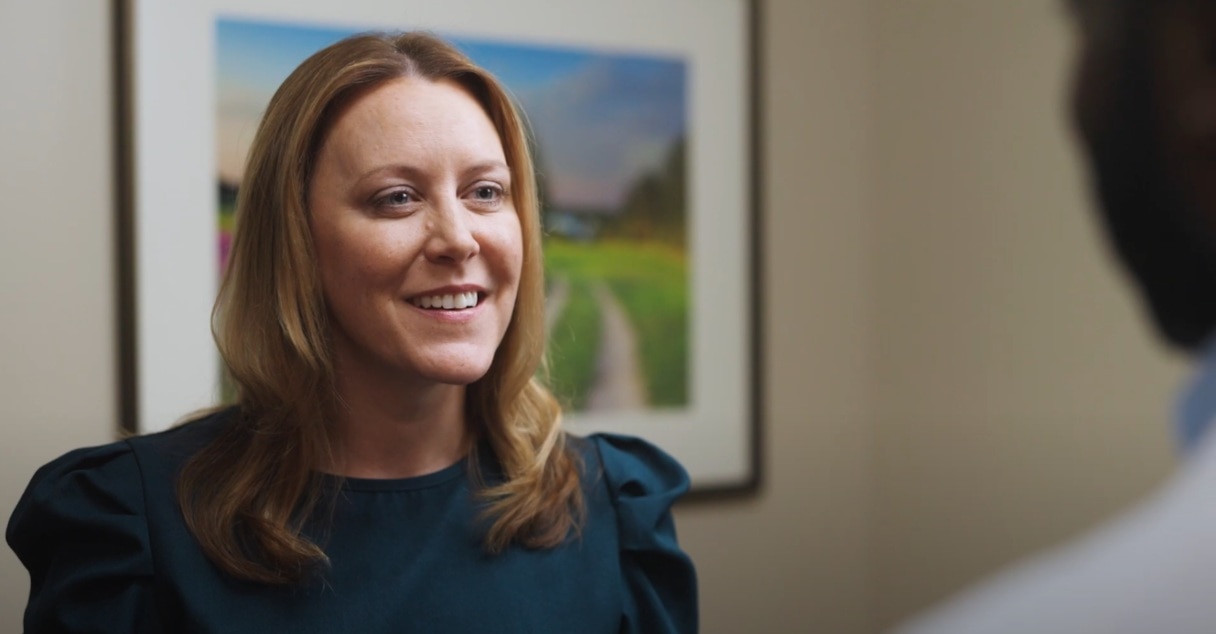How Cost Impacts the Patient and Provider Journey
How does cost factor into the decisions patients make about the care they receive? Learn research findings that explain the impact of cost throughout the patient journey, as well as the role providers are playing in cost discussions.
By Synchrony, Health & Wellness
Posted Jul 12, 2024 - 10 min read

How do the costs of out-of-pocket health and wellness expenses affect people’s care decisions? And how do patients and clients expect providers to engage with them in discussions concerning costs and payment options?
Below are some findings from Synchrony's 2023 Healthcare Journey Research Consumers and Providers study, which are featured in CareCredit’s “How Cost Impacts the Patient and Provider Journey” e-book and infographic. Further down, you will also find research findings specific to different healthcare industries.
Costs Can Create Barriers to Care for Patients
According to the Healthcare Journey Research Consumers and Providers study:1
- 52% of patients surveyed struggle to pay for out-of-pocket health and wellness expenses
- 53% delay health or wellness care due to out-of-pocket expenses
- 76% would seek more services for health and wellness care if they had ways to pay for them
- 59% said available options from their healthcare providers are limited when it comes to paying for out-of-pocket expenses
In the study, 50% of patients reported feelings of stress, anxiety, sadness, annoyance or frustration related to out-of-pocket health and wellness expenses. Additionally, 40% described deciding how to pay for those expenses as stressful, frustrating, challenging or confusing.1
When deciding where to go for treatment, patients rated the following factors as being extremely important or very important to them:1
- Acceptance of the patient’s insurance (86%)
- Cost of services (71%)
- Availability of a variety of payment options, including special financing (59%)
- Whether the provider is the least expensive option (43%)
Costs Can Create Limitations for Providers
Cost isn’t just a hurdle for patients. Seventy percent of healthcare providers surveyed believe cost is a barrier to patients scheduling care.1
Even when appointments are scheduled, collection of payment becomes a challenge, as practices may have anywhere from 8% to 18% of accounts (depending on the industry) that are delinquent. In the Synchrony survey, 50% of providers said their practices use debt collectors for late payments.1
Many healthcare providers have turned to in-house financing to resolve these issues. Providers surveyed by Synchrony said they are two times more likely to offer in-house financing versus a third-party financing solution, yet only 40% of providers surveyed are satisfied with in-office payment plans.1
Not only can in-house financing be time-intensive for practices, but it can also come with financial risk when patients fall behind on their payment plans.
The Disconnect in the Presentation of Payment Solutions
Another common issue in the healthcare journey is how and when providers discuss payment solutions with patients.
According to the Healthcare Journey Research Consumers and Providers study, patients surveyed prefer that payment option discussions occur before scheduling (55%) or at the time of scheduling (33%). However, providers surveyed claim that payment options discussions happen most commonly at the appointment (77%) or after the appointment (45%).1
Furthermore, 61% of patients surveyed prefer to learn about payment methods directly from their provider (including through email, mailed materials, phone call, text message or the provider’s website). Yet only 5% of the time, providers surveyed said they handle billing and payment conversations.1
Healthcare providers who want to improve the patient experience and create a smoother healthcare journey may want to consider presenting flexible payment solutions (such as financing) to patients earlier on, specifically before or at the time of scheduling. They should also train their staff to be prepared to answer any questions that may arise about setting up financing or payment plans.
Additional Research Insights by Industry
Get more patient and provider journey insights broken down by healthcare industry:
- Dermatology
- Hearing
- Medical and day spas
- Ophthalmology
- Orthopedics
- Plastic surgery
- Refractive and optometry
- Women’s health — pregnancy
Dermatology patient research insights
While most dermatology patients may not start their journey concerned about costs, the out-of-pocket expense does end up surprising some, making costs and financing options critical when choosing a provider.
According to Synchrony’s 2023 Dermatology Patient Journey study:2
- The average out-of-pocket costs are $465 for cosmetic dermatology and $222 for medical dermatology.
- Nearly half (45%) of cosmetic dermatology patients surveyed and 1 in 4 medical dermatology patients surveyed are surprised by the cost.
- As many as 21% of dermatology patients find it difficult to pay.
- More than half prioritize payment options when selecting a provider.
- Half of current CareCredit cardholders will switch providers if they don’t specifically offer CareCredit.
Additionally, dermatologists admit the bill can be higher than what is quoted 19% of the time, sometimes by more than 20%.1
While some dermatologists offer financing, there is significant room for improvement in how often, when in the journey and what type of financing they offer. According to Synchrony’s research:1
- Only 19% of providers feel that not offering a payment solution will have a negative impact on their practice.
- Only 11% will offer payment solutions to patients unprompted.
- And 16% said their office does not promote payment options at all. Those that do mostly promote financing options on the bill.
Hearing research insights
Costs can be a barrier to consumers committing to hearing care and optimal hearing devices, and affordability, accessibility, insurance coverage and payment collection are some of the top challenges providers face.1 Synchrony’s research shows that:3
- Of hearing aid consumers surveyed, 50% wish they had worn hearing aids earlier and 68% said cost was the reason they didn’t.
- Nearly 16% said they ultimately had to settle for a lesser/different pair of hearing aids due to cost.
- Over half (59%) said they were not offered any type of payment solution.
- Only 1 out of 4 providers surveyed realize that cost is a barrier to care for their patients getting the hearing aids they need.
- About a quarter of the time, hearing care providers surveyed said they offer CareCredit, despite patients paying by general credit card more than half of the time.1
Medical and day spa research insights
Medical and day spa patients and clients appreciate the tangible health and wellness benefits of spa services, but costs and a lack of attractive financing options could keep them from engaging in these services as often as they’d like:1
- Patients and clients surveyed want to engage in spa services more often (94% of day spa respondents and 69% of med spa respondents).
- Cost is the number one barrier to engagement for 64% of those surveyed.
- Only 14% of day spa clients and 35% of med spa patients or clients were offered any type of financing or payment plan.
Ophthalmology research insights
While most patients try to prepare themselves for the cost of their ophthalmology procedures, out-of-pocket costs can be a struggle for some:1
- Patients surveyed reported an average out-of-pocket cost of $1,850 for ophthalmic surgery.
- Over half (56%) of ophthalmology patients said they struggle to pay out-of-pocket costs.
- As many as 24% of ophthalmology providers admit the bill can be higher 1 in 4 times.
- Only 35% of ophthalmology patients said they were offered a payment solution.
Ophthalmology providers recognize the limitations costs can have on their practice, but many have not recognized the value of offering payment solutions:1
- Nearly three-quarters (72%) of ophthalmology providers surveyed said they believe cost may be a barrier to scheduling care.
- Only 17% of ophthalmology providers said they feel a negative impact on their patients and business by not offering payment solutions.
- Providers surveyed reported that 12% of ophthalmology practice accounts are delinquent on average.
Orthopedic research insights
While costs are an expected part of the orthopedic surgery journey, orthopedic patients can be stressed and frustrated when expenses are surprisingly higher, and not all patients are offered a payment solution. Synchrony’s research shows:1
- More than one-third (34%) of orthopedic patients are surprised at how high their care costs are.
- As many as 32% of bills are higher than the estimate.
- Orthopedic providers reported that 5% of bills are more than 20% higher than the estimate.
- A little over half (53%) of orthopedic patients said they were offered a payment option.
The research also shows that orthopedic providers rely heavily on in-house payment plans despite continued struggles to collect payment and general dissatisfaction with this method. According to the study findings:1
- Many providers (62%) said they offer in-house plans, and 5% of out-of-pocket costs are paid for with this method.
- More than half (52%) of late payments at orthopedic practices are sent to collections, and 5% require legal intervention or a lawsuit.
- Nearly half (49%) of orthopedic providers said they are satisfied with their current payment methods.
Plastic surgery research insights
Cost can be a barrier to plastic surgery patients pursuing the procedures they want and need:1
- The average out-of-pocket cost for plastic surgery is $4,804, as reported by patients surveyed.
- Due to out-of-pocket expenses, 57% said they have struggled with, delayed or pushed off care.
- As many as 83% said they would pursue additional services if they had ways to pay.
- Nearly three-quarters (72%) said that offering payment options is important when deciding where to go.
Synchrony’s research also found that there are major discrepancies in how patients and providers feel about financing in the plastic surgery category:1
- Providers claim to offer a wide range of payment options, including healthcare credit cards (38%), loans (38%) and in-house payment plans (16%).
- Yet, patients claim in-house payment options are the dominant offering — 71% in-house payment plans and 11% loans plus credit cards.
- Only 45% of plastic surgery providers said they feel there are not enough payment solutions available.
- Yet 72% of plastic surgery patients said they feel there are a limited number of options to pay for out-of-pocket medical expenses.
Refractive and optometry research insights
According to Synchrony’s research, refractive patients have limited payment options, but most do not take advantage of them:1
- Nearly 3 out of 4 refractive patients said they were offered financing or a payment plan, but only 1 out of 4 said they accept or leverage the offer.
- Over half (59%) of refractive patients believe their options are limited when it comes to paying for out-of-pocket care.
- According to surveyed patients, 82% of payment options offered are in-house plans, despite providers’ claims to offer a wide variety of third-party financing solutions.
Costs play a role in the speed at which patients commit to optical care procedures and products, making the availability and proactive offering of payment options important. Unfortunately, optometry providers typically reserve financing for perceived "inability-to-pay moments," and even then, many aren’t comfortable proactively offering it.4 A 2021 CareCredit study found that:5
- More than half of patients (52%) said offering a variety of payment options is critical in selecting an optical provider.
- As many as 1 in 3 (32%) said they will postpone making an optical purchase if it’s not covered by insurance.
- Nearly half (40%) said they will consider financing if it helps enable an immediate purchase.
- And 1 out of 4 said they were either not aware of (16%) or were not offered (10%) the CareCredit financing solution.
Women’s health — pregnancy research insights
Out-of-pocket costs for women’s health and pregnancy can add up and cause stress for new parents. Providers typically offer payment plans after the birth, but many patients prefer to research and plan for costs in advance. Synchrony’s research shows that:1
- For 41% of patients surveyed, the total cost of pregnancy is more than they expected.
- Nearly three-quarters (72%) of patients said providers mostly offer payment plans after receiving care.
- Pregnant patients said they would prefer to learn about payment options before receiving care.6
Despite many providers recognizing that offering alternative payment solutions has a positive impact, most practices surveyed spend time reaching out to patients and debt collectors when payments are late. Synchrony’s research shows that:1
- Of patients surveyed, 60% were offered financing or payment options.
- Over 10% end up negotiating costs down in the process.
- About 13% of OB-GYN accounts go delinquent.
- Debt collectors are used 60% of the time.
The Take-Home Message for Providers
As out-of-pocket costs rise, this barrier may persist and grow, which could increase the likelihood of patients delaying or forgoing health and wellness care for themselves and loved ones due to concerns with how to pay.
Healthcare providers could suffer as well; their ability to facilitate optimal patient outcomes and operational cost management may be limited. And while some offer in-house financing to help patients, this practice can also come with unnecessary time and expense to their bottom line.
Flexible financing with the CareCredit health and wellness credit card can help address these barriers and limitations by enabling patients to commit to the care they want and need. Additionally, with less potential risk and administrative burden than in-house financing plans, CareCredit financing solutions can also help providers minimize accounts receivable.
As a provider, it's important to consider the cost concerns of your patients or clients and determine what types of flexible payment options can help ease those concerns while providing the highest level of benefit for your practice or business.
A Patient Financing Solution for Health and Wellness Providers
If you are looking for a way to connect your patients with flexible financing that empowers them to pay for the care they want and need, consider offering CareCredit as a financing solution. CareCredit allows cardholders to pay for out-of-pocket health and wellness expenses over time while helping enhance the payments process for your practice or business.
When you accept CareCredit, patients can see if they prequalify with no impact to their credit score, and those who apply, if approved, can take advantage of special financing on qualifying purchases.* Additionally, your practice or business will be paid directly within two business days.
Learn more about the CareCredit credit card as a patient financing solution or start the provider enrollment process by filling out this form.
Ready to help more patients and clients get the care they want and need?
Get StartedReady to help more patients and clients get the care they want and need?
Get Started*Subject to credit approval.
The information, opinions and recommendations expressed in the article are for informational purposes only. Information has been obtained from sources generally believed to be reliable. However, because of the possibility of human or mechanical error by our sources, or any other, Synchrony and any of its affiliates, including CareCredit, (collectively, “Synchrony”) does not provide any warranty as to the accuracy, adequacy, or completeness of any information for its intended purpose or any results obtained from the use of such information. The data presented in the article was current as of the time of writing. Please consult with your individual advisors with respect to any information presented.
© 2025 Synchrony Bank.
Sources:
1 Healthcare Journey Research Consumers and Providers report, Synchrony, 2023. (CareCredit is a Synchrony solution.)
2 Dermatology Patient Journey, Synchrony, 2023. (CareCredit is a Synchrony solution.)
3 CareCredit Hearing Research, 2023.
4 ECP Activation, CareCredit, 2024.
5 CareCredit Path to Care — Optical Purchase Findings, 2021.
6 CareCredit Consumer Healthcare Journey Qual Report _ Baby, 2023. (CareCredit is a Synchrony solution.)




